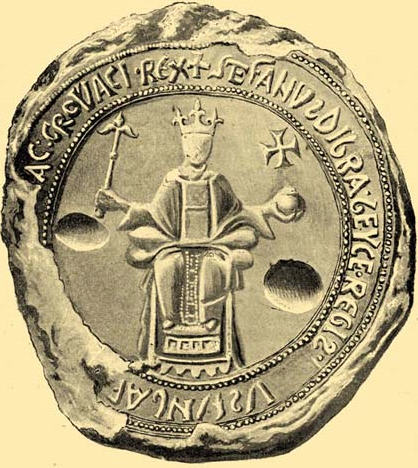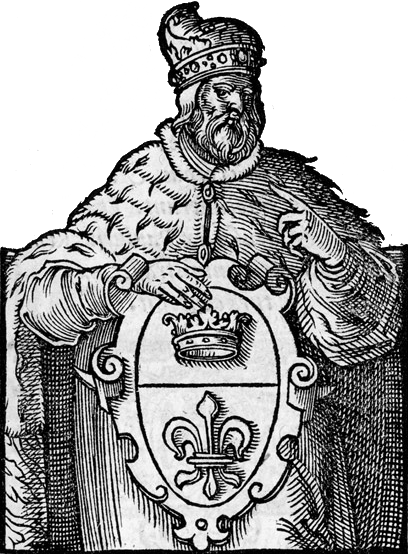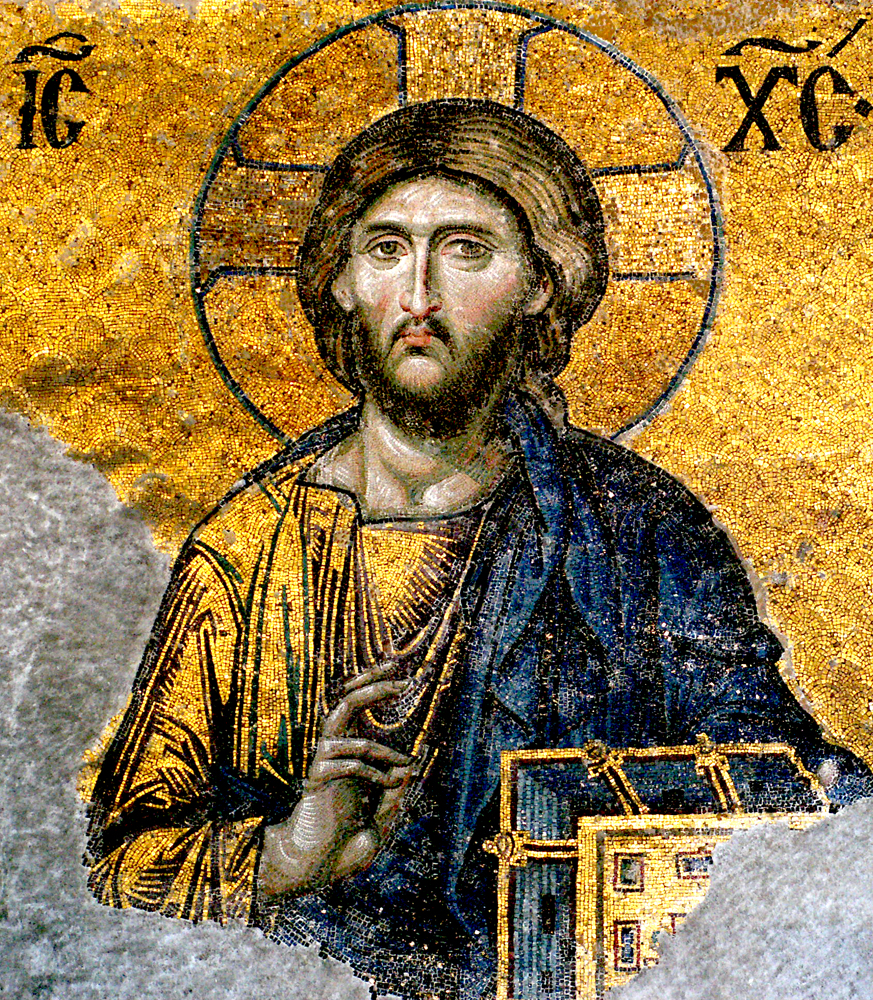|
Ordelafo Faliero De Doni
Ordelafo Faliero de Doni (or Dodoni) (died 1117 in Zadar, Kingdom of Hungary) was the 34th Doge of Venice. Biography He was the son of the 32nd Doge, Vitale Faliero de' Doni. He was a member of the Minor Council (''minor consiglio''), an assembly formed from members of the so-called "apostolic families" that, in oligarchical Venice, assumed the governmental functions of judges, military councilmen, ambassadors and heads of state. His first name, which is otherwise unknown in Venetian history, is thought to have been derived from a backwards spelling of the Venetian name "Faledro", or from the Ordelaffi family, of which the Faliero family is thought to be a stirpe. During his reign as Doge, Faliero went to war against the Croats and Hungarians, ruled at the time by Coloman, which lasted from 1105 to 1115. Faliero succeeded in recapturing Zadar and Šibenik ( it, Sebenico). Afterwards, Faliero was engaged in an expedition to Syria, comprising 100 Venetian ships, which s ... [...More Info...] [...Related Items...] OR: [Wikipedia] [Google] [Baidu] |
Pala D'Oro
Pala may refer to: Places Chad *Pala, Chad, the capital of the region of Mayo-Kebbi Ouest Estonia * Pala, Kose Parish, village in Kose Parish, Harju County *Pala, Kuusalu Parish, village in Kuusalu Parish, Harju County *Pala, Järva County, village in Türi Parish, Järva County * Pala, Jõgeva County, village in Peipsiääre Parish, Jõgeva County *Pala Parish, former rural municipality in Jõgeva County India *Pala, Kerala, a town in the state of Kerala *Pala (State Assembly constituency) *Pala dynasty (other), several historical ruling groups *Pala Empire, an imperial power originating in Bengal during the Late Classical period *Pala Lake, English name for Palak Dil, a large lake in the state of Mizoram, Northeast India Turkey *Palā or Pala: a Bronze Age country in northern Anatolia, ** where the extinct Palaic language (or ''Palaumnili''), a part of the Indo-European language family, was spoken. United States *Pala, California, a small community in the Pala Indi ... [...More Info...] [...Related Items...] OR: [Wikipedia] [Google] [Baidu] |
Acre, Israel
Acre ( ), known locally as Akko ( he, עַכּוֹ, ''ʻAkō'') or Akka ( ar, عكّا, ''ʻAkkā''), is a city in the coastal plain region of the Northern District of Israel. The city occupies an important location, sitting in a natural harbour at the extremity of Haifa Bay on the coast of the Mediterranean's Levantine Sea."Old City of Acre." , World Heritage Center. World Heritage Convention. Web. 15 Apr 2013 Aside from coastal trading, it was also an important waypoint on the region's coastal road and the road cutting inland along the |
1117 Deaths
Year 1117 ( MCXVII) was a common year starting on Monday (link will display the full calendar) of the Julian calendar. Events By place Europe * King Stephen II of Hungary regains Dalmatia from Venice while the Venetians are on a naval expedition. Doge Ordelafo Faliero dies in battle (near Zadar) against the Hungarians. Faliero is succeeded by Domenico Michiel, who reconquers more territory and agrees to a 5-year truce with Hungary. * Ramon Berenguer III (the Great), count of Barcelona, inherits Cerdanya (located between the Pyrenees and the Ebro River) which becomes part of the Principality of Catalonia. * Vladislaus I, duke of Bohemia, abdicates in favor of his brother Bořivoj II, but retains much of the actual power. * The Almoravids briefly reconquer Coimbra (modern Portugal). * 3 January - 1117 Verona earthquake. The earthquake is rated at VII (''Very strong'') on the Mercalli intensity scale, and strikes northern Italy and Germany. The epicentre of the first ... [...More Info...] [...Related Items...] OR: [Wikipedia] [Google] [Baidu] |
11th-century Births
The 11th century is the period from 1001 ( MI) through 1100 ( MC) in accordance with the Julian calendar, and the 1st century of the 2nd millennium. In the history of Europe, this period is considered the early part of the High Middle Ages. There was, after a brief ascendancy, a sudden decline of Byzantine power and a rise of Norman domination over much of Europe, along with the prominent role in Europe of notably influential popes. Christendom experienced a formal schism in this century which had been developing over previous centuries between the Latin West and Byzantine East, causing a split in its two largest denominations to this day: Roman Catholicism and Eastern Orthodoxy. In Song dynasty China and the classical Islamic world, this century marked the high point for both classical Chinese civilization, science and technology, and classical Islamic science, philosophy, technology and literature. Rival political factions at the Song dynasty court created strife amongst ... [...More Info...] [...Related Items...] OR: [Wikipedia] [Google] [Baidu] |
Domenico Michele
Domenico Michiel was the 35th Doge of Venice. He reigned from 1117 to 1130. In August 1122 Domenico Michiel led a Venetian fleet of 100 vessels and around 15,000 men for the defense of the Holy Land. The fleet sailed under the flag of St. Peter, which the Pope had sent to Michiel. Over the winter the fleet set siege to the Byzantine island of Corfu. The siege was cancelled in the spring when news arrived that King Baldwin II of Jerusalem had been captured by the Artuqids, and that the Kingdom of Jerusalem had subsequently been invaded by the Fatimids of Egypt. The Venetian fleet went to the defense of Jerusalem and defeated the Egyptian fleet off of the Syrian coast. The Venetians then landed at Acre; from there Michiel went to Jerusalem, where the ''Pactum Warmundi'' was signed granting Venice privileged trade concessions, tax freedoms, and even partial ownership of some cities within the Kingdom of Jerusalem. On the return journey to Venice, the fleet looted Rhodes, attacked the ... [...More Info...] [...Related Items...] OR: [Wikipedia] [Google] [Baidu] |
List Of Doges Of Venice
The following is a list of all 120 of the Doges of Venice ordered by the dates of their reigns. For more than 1,000 years, the chief magistrate and leader of the city of Venice and later of the Most Serene Republic of Venice was styled the ''Doge'', a rare but not unique Italian title derived from the Latin Dux. Doges of Venice were elected for life by the city-state's aristocracy. The Venetian combination of elaborate monarchic pomp and a republican (though "aristocratic") constitution with intricate checks and balances makes "''La serenissima''" (Venice) a textbook example of a crowned republic. Despite the great power given to them, the Venetian Doges were restricted by law (unlike the Doges of the Republic of Genoa) to spend the rest of their lives inside the Doge's Palace complex and St Mark's Basilica, occasionally leaving for diplomatic reasons. Byzantine period Magister militum per Venetiae Ducal period Republican period Legacy After the Fall of the Republic of ... [...More Info...] [...Related Items...] OR: [Wikipedia] [Google] [Baidu] |
Vital I Michele
Vital I Michiel (died 1102) was a Doge of Venice; he was the 33rd traditional (30th historic) Doge of the Republic of Venice. A member of one of the so-called “twelve apostolic” families, he was married to Felicia Cornaro, who had influence on his politics. Life When Pope Urban II initiated the First Crusade, Vitale I Michiel did not initially urge Venice’s support, perhaps because he could not see the advantages to Venice of such an expedition. When Doge Vitale I Michiel saw the European commitment to the First Crusade, he then understood the war’s economic importance. In particular, he foresaw that it was vital to Venice’s trade advantage to participate in territorial conquest, lest these advantages inure to the benefit of other marine republics. In July 1099, 207 ships sailed from Venice to support the First Crusade. Doge Vitale I Michiel appointed his son, Vitale Giovanni, and the Bishop of Castello, Enrico Contarini, as the fleet’s commanders. In December 1099, ... [...More Info...] [...Related Items...] OR: [Wikipedia] [Google] [Baidu] |
Dogaressa Matelda
Matelda (d. ''after'' 1117) was the Dogaressa of Venice by-marriage to the Doge Ordelafo Faliero (r. 1102-1117). She is said to have been the cousin or sister of King Baldwin I of Jerusalem. Matelda has traditionally been described as an ideal of spousal fidelity. During her time as Dogaressa, Venice was struck by several natural disasters, and during those, Matelda led the women of Venice in prayer to soften the perceived wrath of God. In 1117, she warned Ordelafo to not wage war on Byzantium claiming that his duty was to his people in the time of crisis.Staley, Edgcumbe: The dogaressas of Venice : The wives of the doges ', London : T. W. Laurie After the Zara campaign, wherein the Doge was killed, she received the religious artifacts taken as war prizes from when they were brought to Venice, and installed them in San Maggiore. After this, she joined the convent of San Zaccaria The Church of San Zaccaria is a 15th-century former monastic church in central Venice, Italy. It ... [...More Info...] [...Related Items...] OR: [Wikipedia] [Google] [Baidu] |
Arsenal Of Venice
The Venetian Arsenal ( it, Arsenale di Venezia) is a complex of former shipyards and armories clustered together in the city of Venice in northern Italy. Owned by the state, the Arsenal was responsible for the bulk of the Venetian republic's naval power from the late Middle Ages to the early modern period. It was "one of the earliest large-scale industrial enterprises in history". Overview Construction of the Arsenal began around 1104, during Venice's republican era. It became the largest industrial complex in Europe before the Industrial Revolution, spanning an area of about , or about fifteen percent of Venice.Giove, S., Rosato, P. & Breil, M.A multicriteria approach for the evaluation of the sustainability of re-use of historic buildings in Venice" ''Sustainability indicators and environmental valuation paper - Fondazione Eni Enrico Mattei.'' October 2008. Accessed 30 January 2010. Surrounded by a rampart, laborers and shipbuilders regularly worked within the Arsenal, bui ... [...More Info...] [...Related Items...] OR: [Wikipedia] [Google] [Baidu] |
Saint Mark's Basilica
The Patriarchal Cathedral Basilica of Saint Mark ( it, Basilica Cattedrale Patriarcale di San Marco), commonly known as St Mark's Basilica ( it, Basilica di San Marco; vec, Baxéłega de San Marco), is the cathedral church of the Catholic Patriarchate of Venice; it became the episcopal seat of the Patriarch of Venice in 1807, replacing the earlier cathedral of San Pietro di Castello. It is dedicated to and holds the relics of Saint Mark the Evangelist, the patron saint of the city. The church is located on the eastern end of Saint Mark's Square, the former political and religious centre of the Republic of Venice, and is attached to the Doge's Palace. Prior to the fall of the republic in 1797, it was the chapel of the Doge and was subject to his jurisdiction, with the concurrence of the procurators of Saint Mark ''de supra'' for administrative and financial affairs. The present structure is the third church, begun probably in 1063 to express Venice's growing civic conscious ... [...More Info...] [...Related Items...] OR: [Wikipedia] [Google] [Baidu] |
Pantocrator
In Christian iconography, Christ Pantocrator ( grc-gre, Χριστὸς Παντοκράτωρ) is a specific depiction of Christ. ''Pantocrator'' or ''Pantokrator'', literally ''ruler of all'', but usually translated as "Almighty" or "all-powerful", is derived from one of many names of God in Judaism. The Pantokrator, largely an Eastern Orthodox or Eastern Catholic theological conception, is less common under that name in Western Roman Catholicism and largely unknown to most Protestants. In the West, the equivalent image in art is known as Christ in Majesty, which developed a rather different iconography. ''Christ Pantocrator'' has come to suggest Christ as a mild but stern, all-powerful judge of humanity. When the Hebrew Bible was translated into Greek as the Septuagint, ''Pantokrator'' was used both for ''YHWH Sabaoth'' "Lord of Hosts" and for '' El Shaddai'' "God Almighty". In the New Testament, ''Pantokrator'' is used once by Paul () and nine times in the Book of Revela ... [...More Info...] [...Related Items...] OR: [Wikipedia] [Google] [Baidu] |
Convent
A convent is a community of monks, nuns, religious brothers or, sisters or priests. Alternatively, ''convent'' means the building used by the community. The word is particularly used in the Catholic Church, Lutheran churches, and the Anglican Communion. Etymology and usage The term ''convent'' derives via Old French from Latin ''conventus'', perfect participle of the verb ''convenio'', meaning "to convene, to come together". It was first used in this sense when the eremitical life began to be combined with the cenobitical. The original reference was to the gathering of mendicants who spent much of their time travelling. Technically, a monastery is a secluded community of monastics, whereas a friary or convent is a community of mendicants (which, by contrast, might be located in a city), and a canonry is a community of canons regular. The terms abbey and priory can be applied to both monasteries and canonries; an abbey is headed by an abbot, and a priory is a lesser dependent ho ... [...More Info...] [...Related Items...] OR: [Wikipedia] [Google] [Baidu] |





